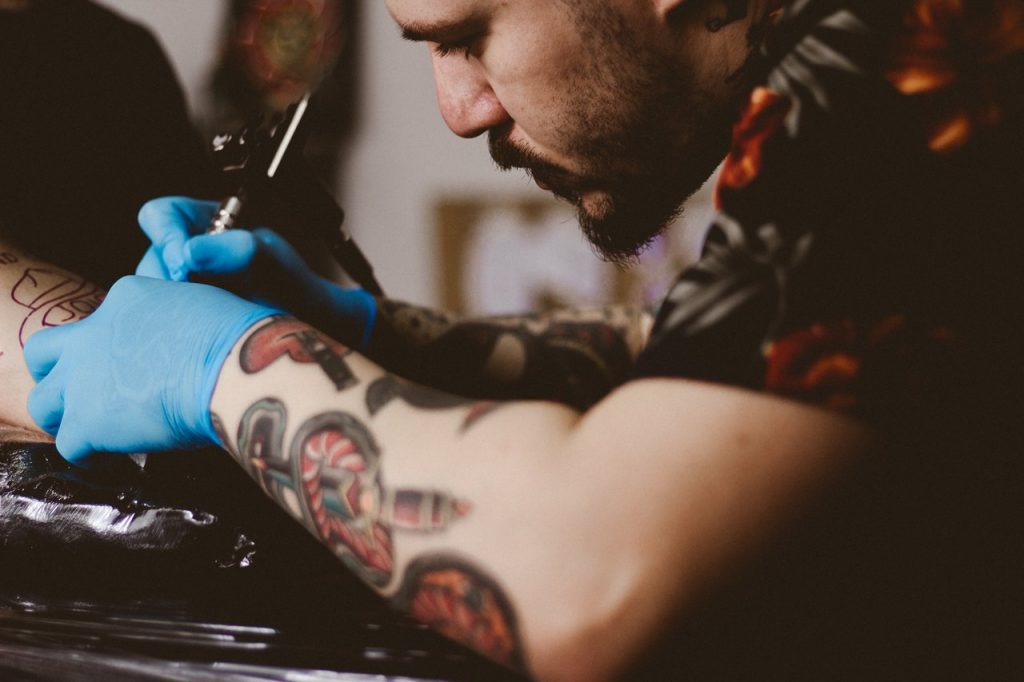Not a lot of people know what tattoo ink is made of – what its components and ingredients are. To be fair, it’s really not all that surprising. After all, tattoo ink manufacturers aren’t required by law to print ink information on their bottles and/or packaging.
In the old days, ink ingredient was quite straightforward – ground ash and soot mixed with water were commonly used. But even now, the US FDA, EU EMA, and the UK MHRA have no rules on what specific inks tattooists can use on their clientele.
In fact, the FDA even specifically states on their website that they “have not approved any pigments for injection into the skin for cosmetic purposes.”
That said, tattoo ink manufacturers now have so many possible ingredients to choose from. And with no official body standing guard, different brands are pretty much free to use their own chemical compositions or ink recipes.
Unfortunately, however, some manufacturers care more about their bottomline than their customers’ well-being. Why do I say this? Well, it’s because some tattoo inks contain highly toxic, dangerous ingredients – things you wouldn’t knowingly want under your skin!
So, is tattoo ink toxic? And what’s in it exactly?

Hmmm… I wonder what’s in these ink bottles. (Photo by zach lee)
Not all inks are equal – some are safe enough to use whilst others may lead to tattoo ink allergies. But what is it that makes tattoo ink toxic or dangerous? Well, before I discuss the reasons why, it’s important to first understand tattoo ink composition.
Tattoo ink has two components:
1. Pigment base or colourant
The pigment gives the ink its rich colour. For example, for black inks, soot and bone charcoal are used as pigments. For other colours, other substances – both metal and organic – are used.
2. Ink carrier
This is the liquid base that evenly distributes the pigment and prevents it from clumping up. It aids in the application by carrying the pigment from the needle tip to the dermis. It also supposedly prohibits the growth of pathogens in the ink, but there have been reports of contaminated ink recalled by the FDA.
Most common tattoo ink pigments used
Tattoo pigments today still use the same time-tested mineral pigments that our ancestors have been using for thousands of years. But modern times brought about modern pigments, too; these include industrial metal pigments and plastic-based pigments.
Fortunately, more manufacturers are now coming up with skin-friendly tattoo inks using organic and vegetable-based pigments.
So, here’s a simple table outlining what materials are commonly used to create which colour tattoo inks:
| Ink colour | Pigment used |
|---|---|
| Black | Carbon (soot or ash), nickel, iron |
| Brown | Ochre, iron |
| Yellow | Lead, cadmium, zinc, ferrocyanide, ferricyanide |
| Red | Mercury (cinnabar), cadmium, iron, napthol |
| Orange | Cadmium, disazodiarylide |
| Green | Lead, chromium, aluminium, copper, ferrocyanide, ferricyanide |
| Blue | Cobalt, copper, carbonate |
| Violet | Aluminium, dioxazine |
| White | Lead, zinc, titanium, barium |
As you can see in the table above, the materials used to create tattoo ink varies a lot. And this isn’t even a comprehensive list, by any means!
For those DIYing their tattoos at home (or at prison, for that matter), ballpoint pen ink is even used. And, of course, that opens up a can of worms because pen ink ingredients vary widely, too!
What’s even more worrying is that many of these metals aren’t meant to be applied on human skin – much less inserted into it! And the almost-too-brightly coloured tattoos you see nowadays? Most are made with plastic-based pigments which are made for printer ink or car paint, which obviously wouldn’t make it ideal for human skin application.
Most common tattoo ink carriers used
Just like with pigments, there’s also a wide variety of carriers used to aid in the application of pigment to the dermis. In ancient times, simple water was used as carrier. But, of course, us humans are a creative and resourceful bunch, and we’re not going to stop at water, are we?
Today, vodka, tequila and even rubbing alcohol are commonly used as ink carriers because they are supposedly (1) non-toxic and (2) they are powerful disinfectants. At least that’s what some tattoo ink makers say.
That said, here’s a table outlining the most popular ink carriers used today:
| Safe Carriers | Not-so-safe carriers (can potentially be toxic) |
|---|---|
| Distilled water | Denatured alcohol |
| Ethyl alcohol | Methanol |
| Glycerine | Rubbing alcohol |
| Listerine | Gluteraldehyde |
| Propylene glycol | Formaldehyde |
| Witch hazel | Antifreeze |
As you can see, the ink carriers on the right column aren’t exactly safe for intra-dermal skin use. And the horrible truth is that this information is not readily shared by manufacturers. So, even if you ask your tattooist, they may not have a clue about the ink ingredients used.
What’s the best tattoo ink to use then?
There are far too many tattoo inks to crown just one of them as “the best.” As you know by now, tattoo inks come in different colours and carriers. And tattooists even create their own ink recipes by mixing and matching various ingredients together!
Tattoo ink is complicated. But here are a couple of techniques to help ensure the ink that’s about to be tattooed on you is actually “the best” for you.
Ask your tattooist what’s in the ink
Your tattooist should only use ink that comes from reputable manufacturers. And in many cases, these companies will provide information about their ink, such as ingredients used, expiration date, lot number, and their contact information in case some problems arise from the use of the product.
If the tattooist can’t answer your questions or refuse to anyway, then go look for another artist that can give you what you need.
Ask the tattooist to do a patch test
The last thing a true professional want is for his or her handiwork to get infected, and essentially, ruined. So, they’d help you check in advance if you’ll run into issues later on.
That said, patch tests should be done for every type of ink that will be used on your skin. So, if your design requires the use of 4 or 5 inks, then you should get a drop of each ink applied – or even tattooed – on your skin.
You’ll be advised to observe the area for at least 24 hours. If no issues arise, then the inks are good to go (but not a guarantee you won’t encounter side effects later on).
Some allergies don’t appear until months or even years later – it all depends on changes to your body chemistry, the weather, your immediate environment, and many other factors.
Are organic or vegan tattoo ink safer to use on skin?

I wonder what kind of ink he’s using on his client. (Photo by Allef Vinicius)
More and more people are putting their health first over skin art. It’s therefore not surprising to know that the demand for organic or vegan tattoo ink is rising.
In fact, some brands now create vegan inks devoid of glycerine from animal fat, bone char, and other animal by-products. They also tend to favour distilled or purified water as ink carriers.
But is it really safer than mineral- and metal-based ink?
The answer is a surprising no. I know… you were probably expecting vegan ink to be a much healthier alternative to traditional ink.
According to this article, all the health risks associated with traditional ink apply to vegan ink. Just because the pigment doesn’t contain animal products, it doesn’t mean that vegan ink doesn’t contain carcinogenic chemicals, too.
Moreover, vegan ink nanoparticles can still cause infections and allergies, just like other common inks.
Lastly, organic and vegan ink aren’t exempted from contamination during the manufacturing process, and even during the actual tattooing process itself.
Are glow in the dark tattoo inks safe to use?
Glow in the dark tattoos, a.k.a. black light tattoos, are popular among the youth. And it’s not surprising, really. In fact, if we’re being honest, it’s to be expected. It looks extremely cool, and so unlike any other tattoo out there!
With regards to the ink, it’s generally considered relatively safe nowadays. This is because most brands no longer use phosphorus, a dangerous substance that has no business being under someone’s skin.
Many manufacturers have replaced phosphorus with light-reactive ink that’s supposed to be a safer option. However, before you get a glow in the dark tatt, double check the ingredients list to ensure phosphorus isn’t on it!
Conclusion
Now that you know what tattoo ink is made of, will you still go through with your plan to get inked? Tattoo allergies and infections aren’t unheard of, but many people don’t experience adverse reactions to the ink. If in doubt, speak with your tattooist or GP to allay any of your concerns about tattoo ink, the tattooing process itself, and of course, tattoo aftercare.
